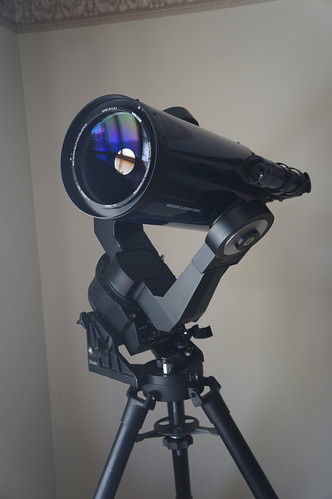I've been updating my telescopes and eyepieces in anticipation of some deep dark skies this summer.
This is my (new used) Meade LX200 7' Maksutov Cassegrain.
What makes this telescope a bit diferent is that it is excellent for viewing planets and double stars. The reason for that is that the Maksutov design uses a fixed secondary mirror which does not require collimation.
In astronomy, the "holy grail" of telescopes is the refractor, but there are several issues which make them difficult to mass produce in large aperatures. First and foremost, the larger the aperature in a refractor, the more the light is scattered based on its wavelength (thats a poor explanation, but its all I got right at the moment). For example, when viewing a bright object such as a planet or the moon in a large refractor, you will see purple colored halos... this is called chromatic abberation. In order to combat this, you need a much more complex and expensive design which compensates for this. These are called Apochromatic "APO" telescopes. A large APO telescope in the 4-5 inch range can cost from $1200 - $10,000 depending on quality, etc.
The Maksutov design does not have these issues being a reflector. Of course it has its own issues, but suffice it to say, you can get "near APO" quality for a fraction of the cost.
For reference: Collimation is the alignment of the optical system in a telescope. When a telescope's optics are not collimated, the images will be fuzzy and will not show much detail.
So - a link to some history on the design of the Maksutov telescope:
http://en.wikipedia.org/wiki/Maksutov_telescope
